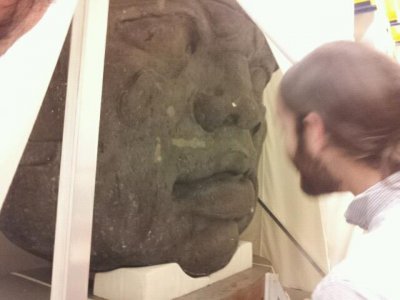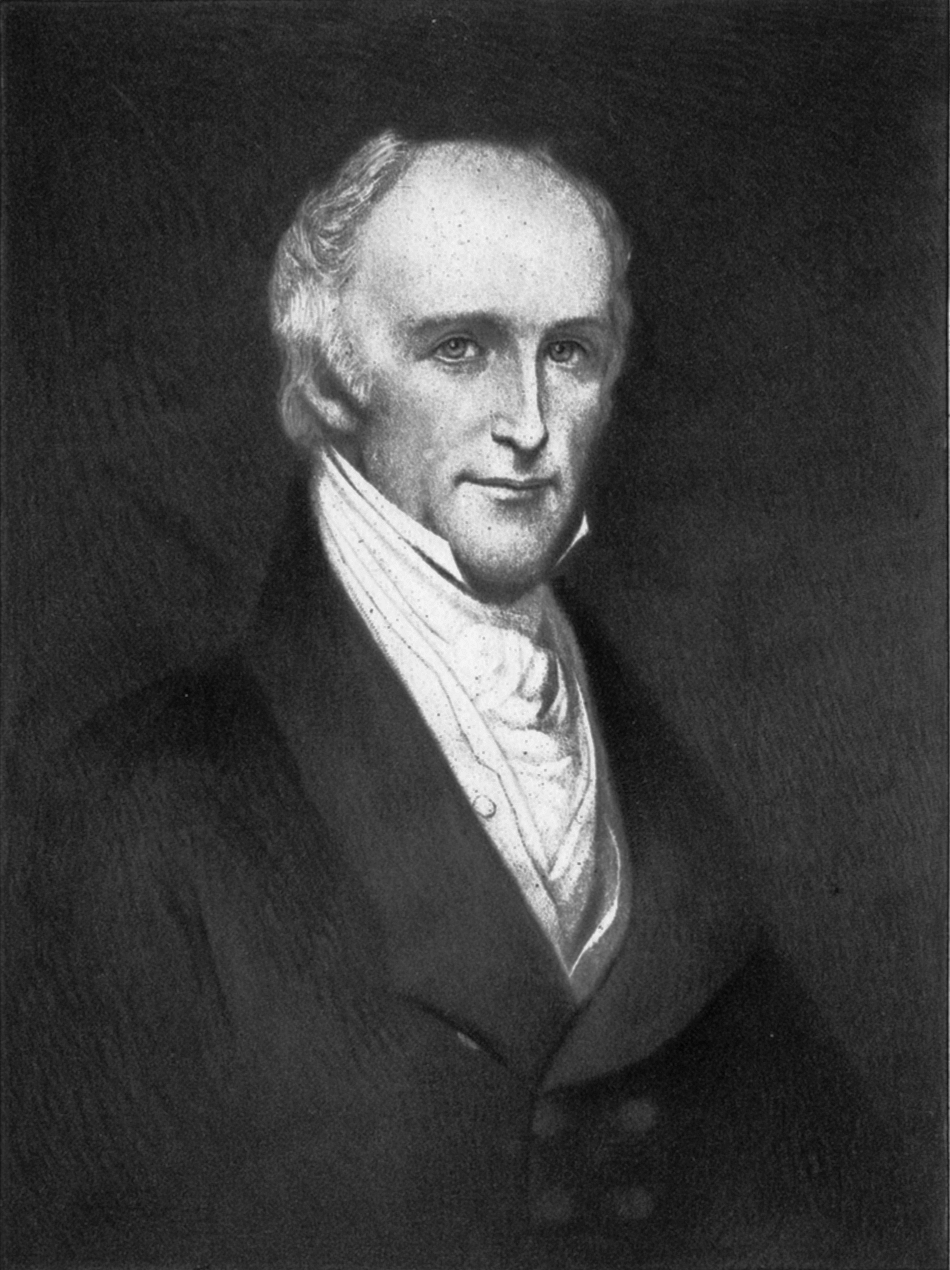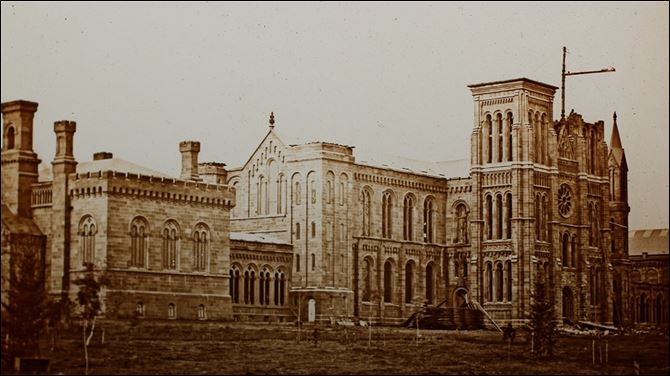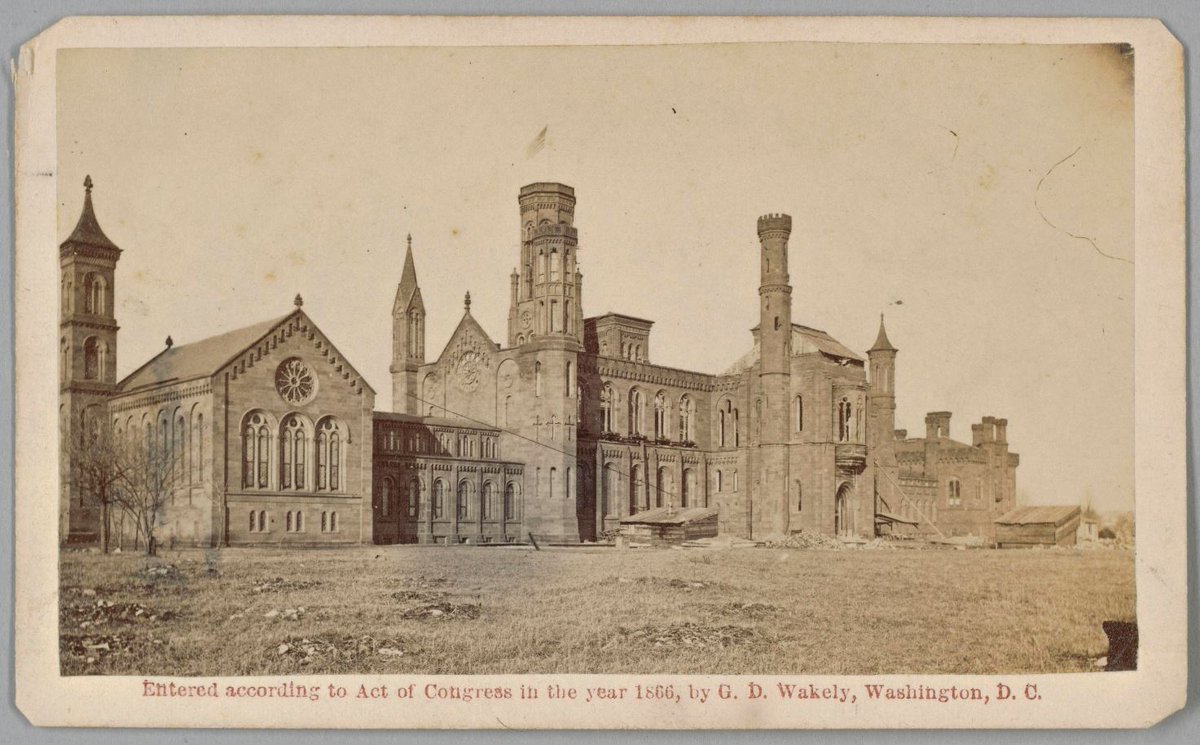The Smithsonian’s Basement
Oh well, seems another of my treasured childhood haunts — the Smithsonian Institution — has crumbled under scrutiny and revealed a nest of Controllers, Fake History Scholars and archive-eating fires!

Lucky Peeps exploring the Smithsonian’s Basement!
As a teenager back in the good old days, I spent some summers in DC while my parents negotiated federal contracts. To keep me occupied while they worked, we were lodged at the L’Enfant Plaza Hotel which (at the time) had underground walking tunnels leading directly to the Aerospace Wing.
So, the Smithsonian complex became my babysitter and I spent blissful days immersed in their collections.
Although I never toured the basements like some lucky folks, I did get to check out the obscure corridors where they still stick controversial exhibits on hot topics like the Arctic Refuge.
Must admit, I found those history and science exhibits pretty boring and spent most of my time contemplating the paintings at the National Gallery or checking out the rock collection at the Natural History Museum.
Regardless, I felt my education had surely been enhanced by the experience of roaming those hallowed halls and I considered the Smithsonian a bastion of empirical knowledge staffed by sincere researchers on a quest for truth.
How naive of me.

Most Memorable Exhibit – the Foucault Pendulum
Imagine my disappointment when I became interested in alternative history research and discovered that my beloved SI seemed to be complicit in the apprehension and disappearance of out of place artifacts — especially when it came to giant remains.
Thus began my inquest into how the Smithsonian Institute was developed.
It was, to say the least, a Big Hot Mess.

James Smithson
For starters, the idea for this glorious institution was not originated by our forefathers but was thrust upon them by James Smithson, a chemist and mineralogist who was the illegitimate son of noble British family.
For unknown reasons (he never even visited America), Smithson left a complicated will dictating that if he had no living claimants (legitimate or otherwise…a strangely important point), his fortune would be bequeathed to the U.S. Congress expressly to create an institute in his name specifically built in Washington with the only instruction that it be used for the increase and diffusion of knowledge among men.

So when Mr. Smithson died in 1829 and his sole heir died childless in 1835, the British informed the U.S. President Andrew Jackson of this bizarre bequest to the U.S. Congress.
In response, Jackson sent Richard Rush, a career politician who knew how to work the system.

Richard Rush – Smithsonian bequest representative
Mr. Rush turned a relatively simple task into an open-ended excuse to live large in London on the American taxpayers money ($14,000 per year).
By 1837 Congress wised up to the scam and told Mr. Rush they were putting a cap on his expenditures and he would be dismissed if he did not produce the Smithson fortune or proof of heir.
Within weeks of these communications Rush managed to secure documentation that the U.S. was the rightful designee.

Once all the interested parties had obtained their share, the bequest to the US was $508,313. President Jackson requested the entire amount be issued in British Gold Sterling — 105 sacks total.
So Mr. Rush, carrying the equivalent of $20 million in today’s terms, took a highly publicized trip from London by steamer and rail to Washington with newspapers reporting every step of the journey.
Amazingly, not one robbery was attempted even when Mr. Rush stopped by the Philadelphia Mint to have the gold re-cast into hard currency – a sum roughly equivalent to 1/66 of the entire federal budget at the time.
But he arrived in DC safely and, once relieved of this fortune, Mr. Rush was dismissed and began seeking new employment (never fear, they eventually put him on the SI Board of Regents and gave him a fat bonus).

Former president John Quincy Adams (who wanted to send an expedition in search of the Mole People of the Inner Earth) was now serving as a Congressman and championed the creation of the Smithsonian.
But guess what Congress did with this legacy that Mr. Rush had assured the British would be fulfilled? They immediately invested the whole shebang in shady Arkansas State Bonds while they decided how to “disperse” the endowment.
Well, that turned out to be a fine bit of financial trickery that allowed the Fat Cats to legally abscond with the money, open a brand new bank in Arkansas and commence bribing the electorate.

These shenanigans continued for 8 years and created continuous news stories with many enraged arguments, concerns over the missing money and even some Senators demanding the money be sent back to Britain!
In the end the half million dollars (plus interest) was declared missing and since the U.S. Federal Government had insured the bequeathment for the Institution, the American taxpayers funded it in the end.

Finally in 1846, after listening to years flowery speeches about how the money should go into construction of an Observatory, an Athenean College, an Agricultural College or a Library — all of which were dismissed — they approved the Bill with some strange stipulations about keeping all of Mr. Smithson’s artifacts separate from the public collections.
Hmmm…
…a box containing sundry specimens of minerals…a box of minerals…a mahogany cabinet…two large boxes filled with specimens of minerals and manuscript treatises, apparently in the testator’s handwriting…”
A mineralogist who saw the collection wrote to the American Philosophical Society in 1841 [stating] “that among the valuable things contained in the Smithson boxes were found a superb collection, and very large, precious stones and exquisite crystalized minerals, forming, as far as I judge, decidedly the richest and rarest collection in this country.”
From American History Autographs
Despite the pleas to keep the building costs from taking a big chunk out of the bequest, the newly empowered committees began inspecting existing public buildings and quickly claimed prime public land designated for monuments on the Mall near the site for the Washington Monument (another fishy building project).
FYI, the Castle was located right by the local slave pens that surely supplied the work force for the Castle (re)construction.

Admittedly, some architects submitted plans to the Smithsonian committee that followed more conventional museum layouts.

But since the whole project was ultimately directed by the DC Power Crowd, they had to go all out and sign up for a full-on castle.
In the end the committee hired the darling of (appropriated) architecture James Renwick, who is connected with over a dozen suspicious Old Empire structures.

Renwick’s Prize Winning Entry
Renwick’s 12th century early Gothic design featured 7 mis-matched towers and specifies the use of Seneca sandstone (George Washington’s stone of choice for his canal business) which is soft and gray when quarried but hardens and turns red as it ages.
Like other suspicious Old Empire Structures supposedly built around the 1850’s, the only construction picture shows walls intact with crews focused on refurbishing tower roofs.

Earliest Known Picture of SI Castle – under construction in 1850
Can’t help but notice some glaring Mudflood evidence…ground-level windows (not a good idea in a marsh, right?) and the scraped off landscape.
Considering the public hoopla that went into funding this place, seems like they would have rigorously documented the castle’s construction but no — all pictures show a completed building.

SI Castle 1860 with foliage

Once they got their castle fixed up, the board set about staffing the place.
Their choice for regent was a rather capable scientist, Joseph Henry, who studied electromagnetism and made huge improvements to existing batteries.

Professor Joseph Henry
Professor Henry brought his family to live with him at the castle where his daughter Mary kept a diary that portrayed the Civil War from a civilian’s point of view.
She explained how they could see the enemy lines from the towers and watch the Union soldiers mustering in DC before heading out to battle.

Mary also relates the events surrounding the assassination of Abraham Lincoln, including the bungled attack the same night by one of Booth’s co-conspirators, Lewis Powell, in the home of Secretary of State William Seward.
Wouldn’t Mary be surprised to learn that Lewis’ skull would turn up in 1991 in the Smithsonian collection of Native American skulls while they were making scans?
Seems the SI was reluctant to give it up but eventually acquiesced to the family’s request to bury his head next to his mother in Florida.

Anyway, once the staff was hired, the newspapers nationwide ran stories informing anyone applying for a copyright in the US to submit a finished copy of their work to the SI within 3 months of publication.
That proved an overwhelming task that they passed on to the newly formed Library of Congress.

Instead, they focused on collecting scientific articles from all over the world about museum related items while launching expeditions to document Native American artifacts.
The first task was to catalog the thousands of earth mounds found in 36 states and Canada (so many they had to list them by county).
The final report filed by expedition leader Cyrus Thompson declared them all the work of indigenous people — even though the Natives claimed they found them and simply continued to add layers to existing earthworks. The idea that any mounds were constructed by a previous race was promoted as a racist attitude.

Seems they simply ignored the reports about some of the mounds containing giant skeletons with strange head formations and double rows of teeth because, ya know, that’s not important.

Mary Henry also records the dubious cause of the great fire in 1865 which destroyed the entire collection of artwork portraying Native Americans, most of Smithson’s packed away treasures (rocks burn?) along with the archival papers and curiosities collected by Professor Henry to launch his museum.

Alexander Gardner Painted Fake Flames on Photo of Castle
Of course, the story behind the fire gets dodgy when you learn from Mary’s diary that workmen installed a stovepipe into a hole in the wall of her father’s study they assumed led to a chimney.
It didn’t.
Somehow the fire smoldered up into the wooden roof beams and set the ceiling ablaze, thereby managing to burn the contents of the fire-proof Seneca stone castle.

Everything on fire BUT the wing that burned
It gets really strange considering the contemporary photos and drawings of the event are not accurate, they show the fire in the wrong part of the castle!
Hmmm…
Sure smacks of poorly re-engineered Antiqui-Tech!

Castle after Fire in 1865
Also residing in the Castle with the Henry family were a merry band of wanna-be scientists who dubbed themselves the Megatherium Club. Though not formally educated in science, they were enthusiastic about collecting dinosaur bones!
They launched expeditions on Sundays as part of their recovery program from their week of partying in the Castle which included sack races down the halls and serenading the Henry daughters.
They were asked to leave in 1866.

The Megatherium (Boys) Club
But that wasn’t the last of the Castle’s resident oddities…from 1866-1883 the Smithsonian employed Joseph Herron as a janitor at the museum.
They assigned him the night shift because he worked in the nude.
I kid you not.

Needless to say, the story of the launching of the Smithsonian is much more colorful than I ever imagined!
Of course, the “official version” written by Henry’s successor in 1869 skillfully weaves the narrative into a much more respectable story, but now we all know better, eh?

I’ll close with this inscription on the monument at the Smithsonian for Andrew Jackson Downing quoting his essays. He was a gifted landscaper who designed the original formal gardens for the Washington Mall, including the grounds for the Smithsonian Castle.

He died tragically at the age of 37 rescuing passengers on a sinking steamboat in the Hudson River and never saw his gardens bloom.

The taste of an individual,
As well as that of a nation,
will be in direct proportion to the
Profound sensibility
With which he perceives the
beautiful in natural scenery.Open wide, therefore,
the doors of your
libraries and picture galleries.
All ye true republicans!Build halls where knowledge
shall be freely
diffused among men,
and not shut up within
narrow walls of
Narrower institutions.Plant Spacious parks in your cities.
And unclose their gates as wide
as the gates of morning to the
Whole people.
The official story of the Smithsonian’s Basement…


The Mummy – the new one with Tom Cruise – the headquarters of Evil….its in the basement of the Smithsonian. just watching it now. they emerge from the Evil Lair and when they throw open the door…and you see the Mammoth…its the Smithsonian. had to jump on and tell you. crazy!
No shit! More veiled truth in movies…love it! Thanks for sharing, pretty wild the things we see once we’ve got the blinders removed! Namaste!
[…] the actual bones have long since been whisked away by the Smithsonian graverobbers, our main sources are old newspaper […]
[…] the mounds were quickly cataloged by the Smithsonian Institution (who also erased evidence of giant remains), most monuments of this widespread society have been […]
[…] to say, that funny feeling that we’ve been lied to yet AGAIN is driving me into a research frenzy…and the more I find the more I suspect that it’s even worse than I […]
A fantastic write-up – I found you via SH and I enjoy your style.
Thanks Laura, I’m a big fan of SH too, so many bright minds at work! Look forward to seeing you there!
Hi weewarrior, found your site a couple of days ago. Loved reading through it — very thought provoking. Would love to send you a donation to support your work. How can I get in touch with you?
Greetings Peter, so pleased you are enjoying the site! I can be reached via email at weewarriorblog@gmail.com.
Donations are appreciated although I admit this is a labor of love that I do just because…
Blessings – WW
[…] The Smithsonian’s Basement […]
[…] the mounds were quickly cataloged by the Smithsonian Institution (who also erased evidence of giant remains), most monuments of this widespread society have been […]
The Lost Civilizations of North America -Were they Tartarian Cities? – @Adrenogate | Fringe Culture said this on November 11, 2020 at 11:59 am |
[…] The Smithsonian’s Basement […]
the current (as of 2019) Deputy Secretary and Chief Operating Officer of the Smithsonian came straight from the CIA:
https://www.si.edu/newsdesk/releases/meroe-park-named-deputy-secretary-smithsonian-institution
[…] 我認為,新成立的史密森尼學會的第一批行動之一是派遣探險隊來定位、挖掘和編目這些土墩,這絕非巧合。 甚至在他們自己的報告中,也詳細描述了包含多排牙齒的巨型墓葬和頭骨。 […]
當巨人隊在美洲漫遊時 – 什談 said this on June 17, 2022 at 5:48 pm |
[…] 儘管史密森尼學會(史密森尼學會)迅速對這些土墩進行了編目(該機構也刪除了巨型遺骸的證據),但這個廣泛社會的大多數紀念碑都以進步的名義被掠奪和摧毀。 […]
北美失落的文明 – 什談 said this on June 17, 2022 at 6:53 pm |
[…] The Smithsonian’s Basement […]
Ron Wyatt The Archeologist Discoveries Gomorrah,Red Sea Crossing, Blood of Jesus Christ (2022)! – Margies Information said this on August 6, 2023 at 12:03 pm |